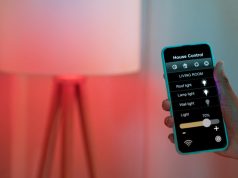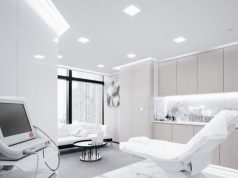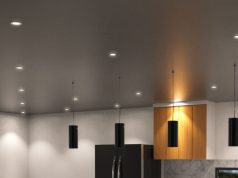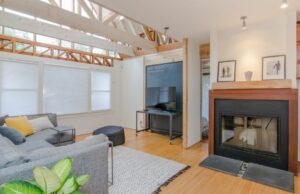Energy-efficient LED light bulbs can help reduce your electricity bill and carbon dioxide emission without sacrificing the quality of luminance in your space. If you swap out all your old fittings with LED light bulbs, you’ll be able to lessen your carbon dioxide emission by 40kg per year, which is the equivalent of driving a car around 145 miles!
Lighting occupies around 11% of a regular household’s electrical consumption. Therefore, switching to an energy-efficient alternative will allow you to save money as well!
Transformation of LED bulbs
More than 100 years ago, incandescent bulbs were invented. However, they’re significantly inefficient. Only 5% of electricity is converted to visible light, and the remaining 95% becomes waste (heat). In addition, the bulb has a very short lifespan because the filament that makes the light evaporates when heat passes through it.
After the incandescent bulbs, halogen bulbs were made. It uses the same filament technology but runs at a higher temperature, making them slightly more efficient. Halogens are mainly seen in spotlight fittings.
Over the years, traditional incandescent bulbs and the least energy-efficient halogen bulbs have been taken off the market to give way to energy-efficient alternatives. Instead of these energy-consuming fittings, modern replacements are designed to produce the same light output but for less energy consumption.
Compact fluorescent lamps (CFL) were the first energy-efficient light bulbs, using 70% – 80% less electricity than traditional incandescent bulbs. Also, it can last around 10 times longer! CFL bulbs have gas inside a glass tube which is charged with electricity until it produces light.
For years, CFLs have greatly helped households to lower their electricity bills. However, an even more energy-efficient lighting solution was invented. Light emitting diodes (LEDs) have taken the place of CFLs in many homes and commercial establishments. It’s more efficient, instantly light up at full brightness and can fit various applications. LEDs emit light from the electricity that passes through them. Inside a bulb, you’ll see several LED chips, which can produce an incredible amount of light!
Removal of Inefficient Light Bulbs
Since more energy-efficient lights are being invented, inefficient light bulbs are being phased out. Manufacturers are not allowed to produce new halogen bulbs, but suppliers and distributors are permitted to sell their old stocks. Also, you can still find specialist halogen bulbs that are used in cooker hoods, ovens, and security lights.
So, when purchasing new fixtures and replacement bulbs, you must check the labels carefully. Try to get LED alternatives to halogen bulbs!
Potential Savings Switching to LED
When you switch to LED lights, you’ll surely benefit from them. One of the things that you can get is savings in your electrical cost! Well, how much can you gain exactly?
Say you’re using a 100w incandescent bulb, and you swap it out for an LED bulb. You’ll be able to save about £15 per bulb per year if it’s based on a 1100-lumen bulb working for 562 hours per year. Just imagine how much you can cut down if you swap 10 bulbs!
Selecting the Correct Bulbs
When choosing the appropriate bulbs for your needs, you should first list your requirements and identify the purpose of each fitting. Once you nail it down, it’ll be easier to determine what type of bulb or categories of fixtures you should go through. Here are some recommendations to keep in mind!
CFL vs LED
There are two types of energy-efficient bulbs on the market: compact fluorescent lamps (CFL) and light emitting diodes (LED). However, LEDs still stand on top of the energy-efficient ladder. In addition, it’s the most common and versatile lighting solution and is ideal for replacing dimmable spotlights and lamps. If you substitute all the lights in your home with LEDs, you can save up to £55 a year on your bill!
Lumen Value
You may have experienced buying a low-energy bulb but became disappointed because of the low level of brilliance it produces. In that case, you may have purchased a bulb with too little lumen value! Traditional light bulbs use watts to determine the brightness level. However, watts measure energy consumption rather than brightness!
You need to check the lumens count for energy-efficient light bulbs like LEDs. Don’t base it on the watts because it will be lower. Remember, the higher the lumens output, the brighter the bulb!
Colour Temperature
LED bulbs are typically available in cool white, natural white, and warm white light. Depending on the area you’ll illuminate, you may need a particular colour. Warm white light is ideal for ambient lighting, and it closely resembles the warmth of an old incandescent bulb. Cool white light and natural white light are both suitable for task lighting, but cool white has a bluish tone, while natural white has no tints of blue or yellow.
In addition, you also need to check the colour rendering index (CRI), as it indicates how well the bulb can show actual colours. Two bulbs may radiate the same colour, but the one with a higher CRI can show colours more accurately. A CRI rating of 80 and above is suitable for household use.
Tips for Reducing Lighting Expenses
If you want to know more ways to conserve energy and lower your electricity bill, follow these simple tips!
- Remember to turn the lights off when you leave any rooms in your home.
- Be conscious of the number of lights you have in a space. You don’t need to simultaneously use them all the time.
- Add timers or sensors for outdoor lighting, so they only work when needed.
- Make light switches accessible so you can turn off your lights quickly.
- Opt for light-coloured lampshades since darker ones can absorb luminance.
- Regularly clean your lampshades or fixtures to ensure dust and dirt are not blocking the light.
LEDs are the top energy-saving lighting solution you can add to your space. So, switch to LEDs to ensure that you’re enjoying premium-quality brightness without skyrocketing your electricity bill! If you’re looking for a one-stop shop for all your lighting requirements, visit our website, Simple Lighting! We have an extensive collection of lighting fixtures and accessories that are guaranteed high quality.













